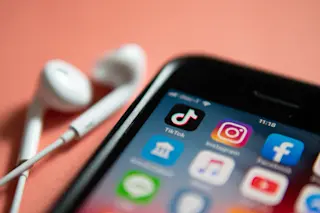"How will we remember the 2000s? What were the high and low points? Who were the heroes and villains?" William Saletan asked in a Slatearticle last week. Do you remember when Senator Joe Lieberman voted to convict President Clinton at his impeachment trial, when President George W. Bush chilled at his Texas ranch with Roger Clemens while Hurricane Katrina destroyed New Orleans, and when Hillary Clinton used Jeremiah Wright in a 2008 TV attack ad against Barack Obama? You shouldn't remember any of these things, because they didn't happen. But Slate made pictures to use as evidence that these events did actually occur as an exercise in "altering political memories." Slate mixed doctored photos of these fake events with other photos of real ones, and asked the readers which they remembered. The readers had no idea they were part on an experiment in memory hacking. More people remembered the real ones, Slatereports:
In the first three days the experiment was posted, 5,279 subjects participated. All of the true incidents outscored the false ones. Our subjects were more likely to remember seeing Powell's Iraq presentation (75 percent), Katherine Harris presiding over the Florida recount (67 percent), or Tom DeLay leading the congressional effort to save Schiavo (50 percent) than any of the five fake scenes.
But people remembered the fakes too. A fake screenshot of the Hillary Clinton ad, for example, fooled 36 percent of readers into thinking it had actually happened. "At that time I was backing Hillary for President. I didn't like it that she used this rather sleazy ad, but her campaign did remove it," one respondent said. The stunt paid homage to memory research; a series of articles on Elizabeth Loftus' human memory research at the University of California at Irvine will follow. Slate meant to show the power of images in producing false memories. Besides quoting George Orwell, they also mentioned a 2002 experiment that, with a little Photoshop magic, fooled 10 out of 20 college students into believing they had gone up in hot-air balloons as children. Related content: 80beats: Lasers Write False, Fearful Memories into the Brains of Flies 80beats: Neuroscientist Says Torture Produces False Memories and Bad Intel DISCOVER: Are Recovered Memories Real? DISCOVER: How Much of Your Memory Is True? Image: flickr / Nrbelex












